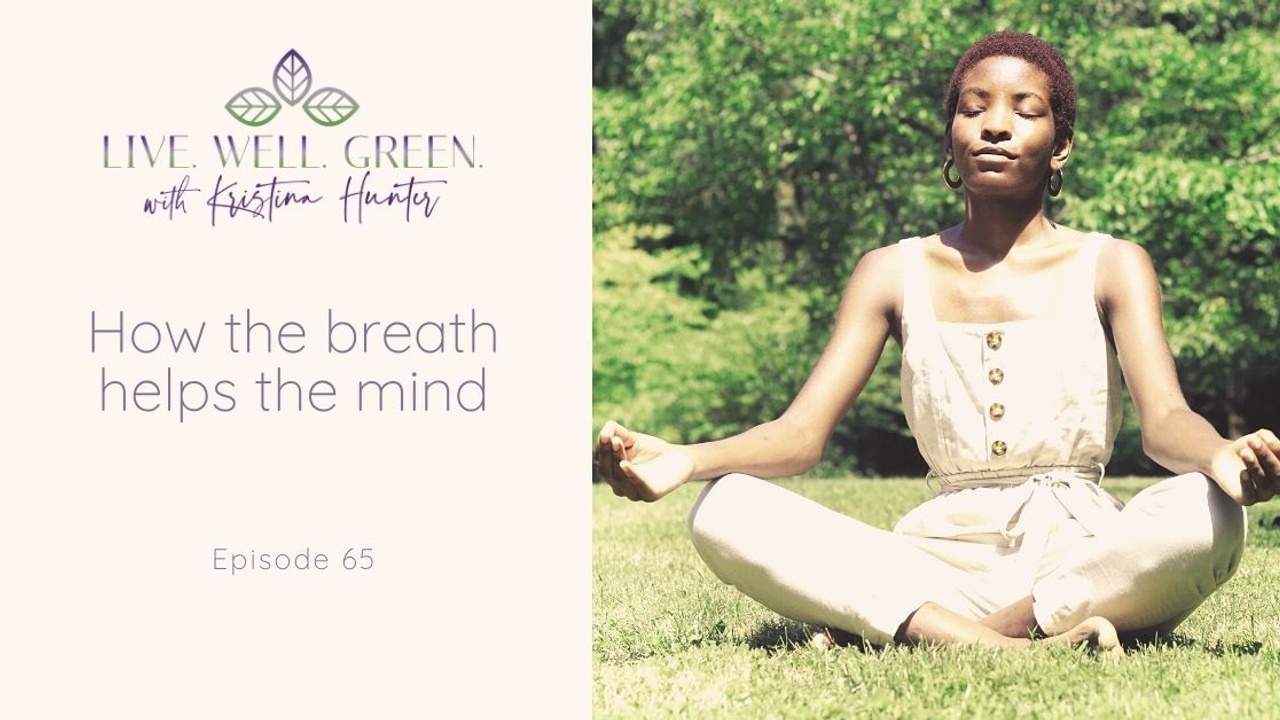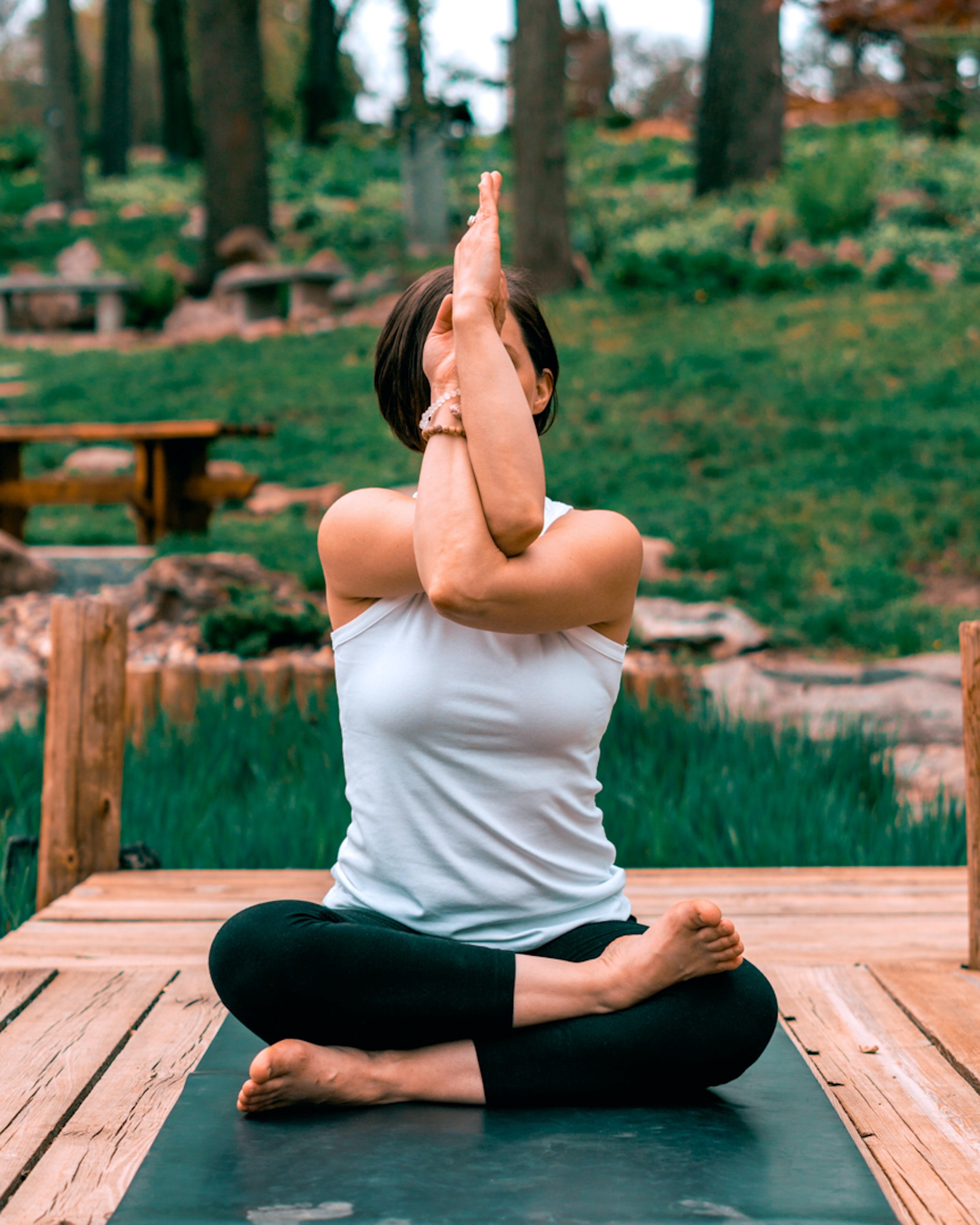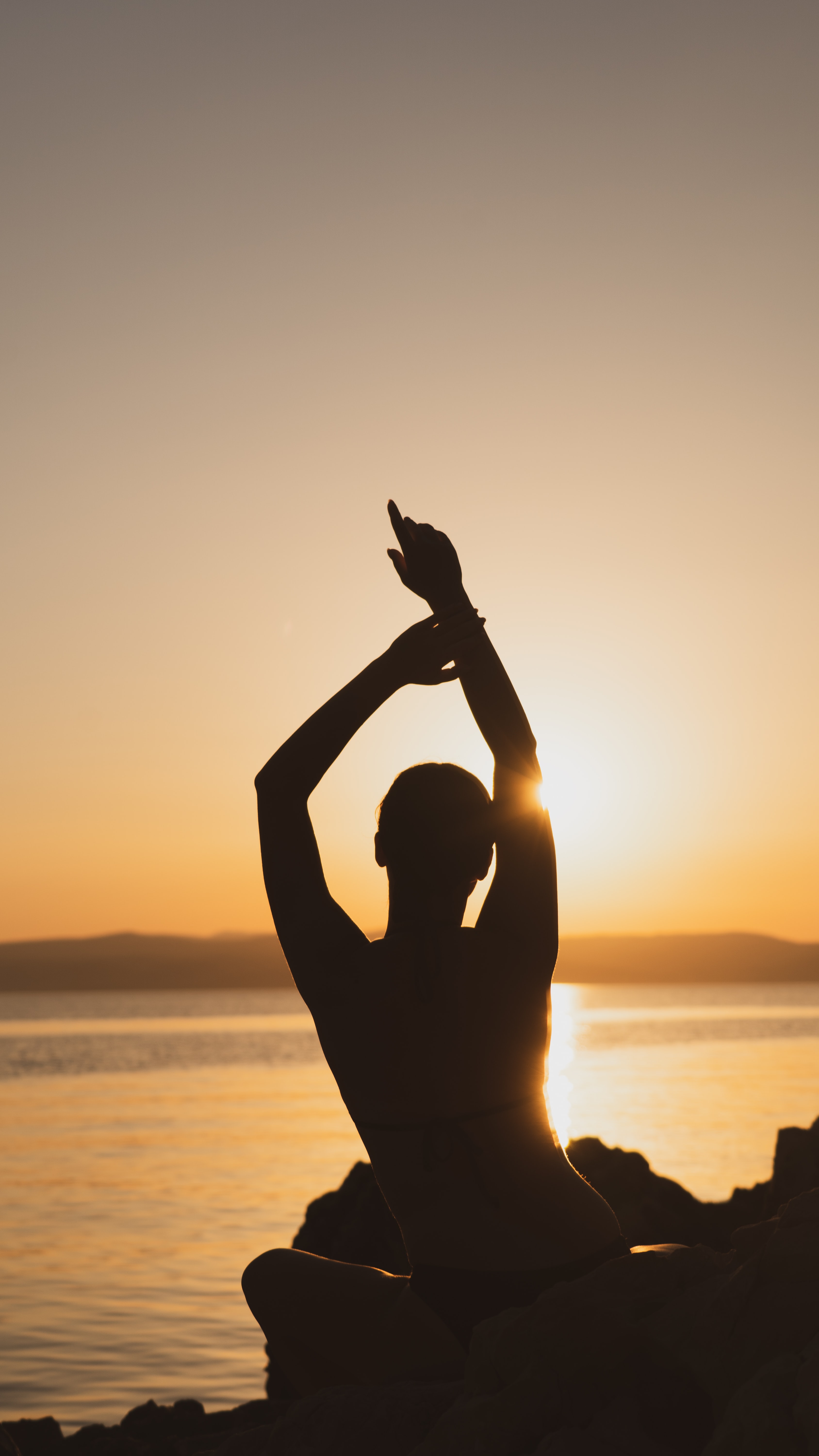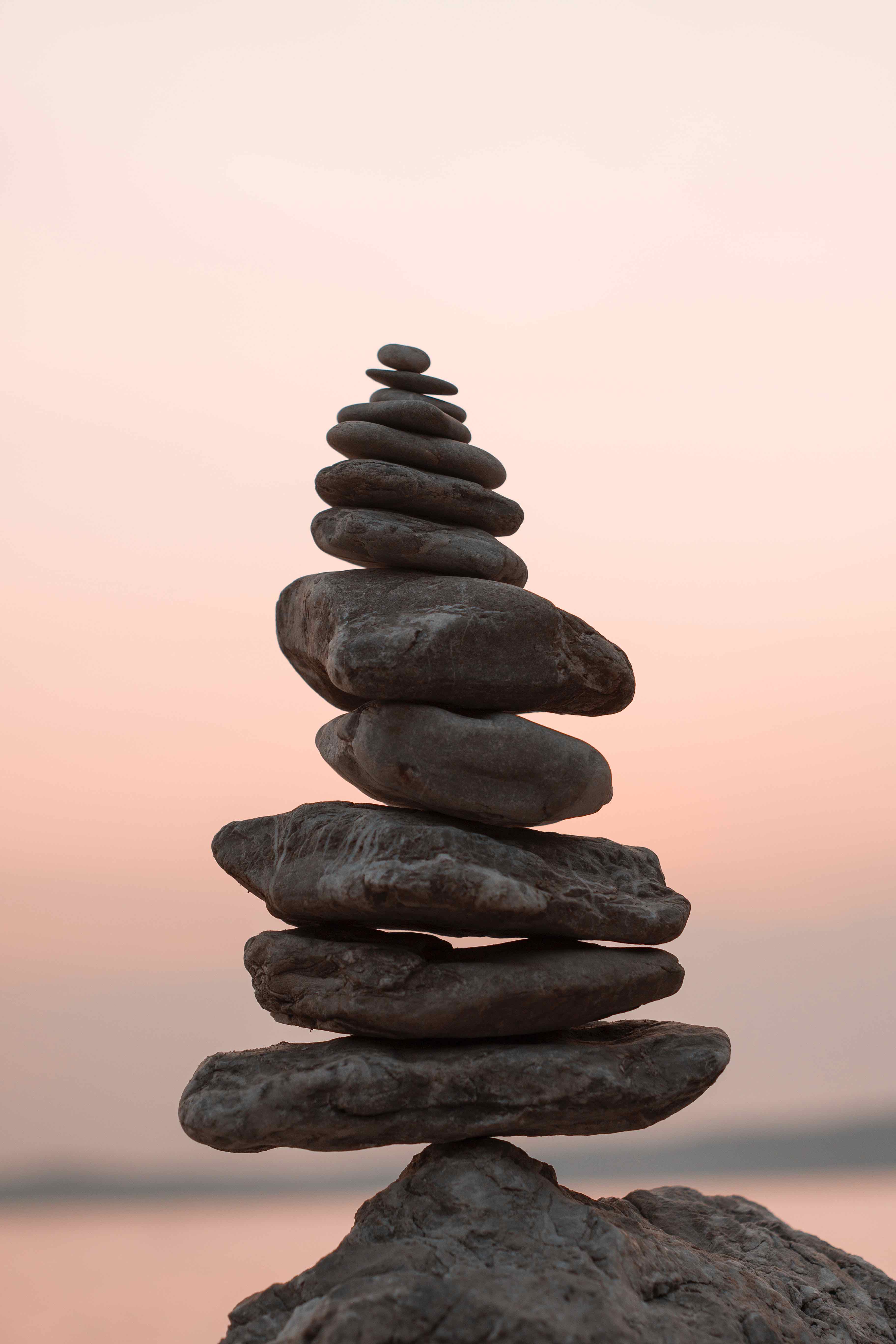How the Breath Helps the Mind
connecting with nature
health
live. well. green. podcast
mental and spiritual wellbeing
sustainable wellbeing

Research shows that there are tangible health benefits of hitting pause on our routines and taking a few deep breaths. Our heart rate drops, blood pressure lowers almost immediately, the brain is flooded with oxygen, and our creativity increases while anxiety drops. If we do this deep breathing in nature the benefits are multiplied. We see positive effects on our immune systems and learning.
Studies on the health benefits of deep breathing in the forest have been explored for decades already. And you probably have already noticed this yourself, the age-old saying, “take a breath” when confronting a challenge really does help most situations.
It is what I did instinctively on September 3rd, 2013 at the age of 42 as I sat in my doctor’s office and she walked in briskly to give me the results, “it’s positive”…wait, that’s good, right? Wrong. “It is cancer”.
So, I ask a few more meaningless questions, and before I cry or dare to look at my husband I sit there, back straight, take a big deep breath in and a long slow exhale through my pursed lips and say, “Ok, where to next?”

Those big, slow deep breaths served me well over the next 5 years as cancer was a major focus of my life. They didn’t solve what was before me, but they helped. Sometimes deep breathing was prescribed when I recovered from surgeries, and sometimes it just helped me move forward, as I tried to be patient with my body, or as I coped with grief and loss.
Researchers have found that deep breathing is one of the most immediate ways to calm the nervous system, whether it be during our yoga practice or as we step outdoors or just pause while working. Sometimes called the “Relaxation Response” a term coined by Herbert Benson, the Harvard Research Physician who gave meditation this scientific term and studied its effects on the body first showed through documented research that simple breathing techniques can have measurable positive effects on our bodies and minds.
Breathing is one of the tangible ways in which we connect with the natural world. We can think about the breath as our connection to all green plants, synthesizing oxygen and our exhalation of Carbon Dioxide that will be taken up in plant respiration. Our part in the natural cycle, our connection to all life on earth, past and present. The molecules remain, cycling through them and through us. Plants and animals, fish and water and soil and rocks, we are all a part of this system. Our breath reminds us of this connection.

Yoga has been defined simply as: movement with breath
Yoga has been around for thousands of years and of course, is a popular method of exercise and wellbeing. And good news, it is not just for the fit and flexible - I may be fairly fit - but definitely not flexible. There is a yoga practice for every body type and ability.
There are many physical benefits of practicing yoga like increased flexibility, increased muscle tone and strength, lowered blood pressure, better posture, and improved balance. However, just as important to me have been the mental health benefits of yoga. Yoga practices often incorporate meditation and breathing exercises that help to reduce stress, increase awareness of our bodies and help with sleep, and mental clarity.
There are hundreds of types of yoga practices, meaning that there is a yoga practice out there for everyone no matter your age, size, health concerns, range of mobility, or experience level. So don’t be put off if what you have seen or tried didn’t work for you.
Chances are that you just haven’t found quite the right style or teacher.
One of the most commonly practiced types of yoga focuses on breathing exercises and physical movement. Postures such as mountain (standing or sitting with your shoulders back and focusing on your body’s connection to the earth, can be practiced no matter your age, body size or ability.
If you are looking for a type of yoga that focuses less on movement and more on relaxation, restorative yoga is a great place to start! It helps you to relax your body and mind by incorporating few movements and deep stretches.

There are also an increasing number of classes that are designed to be inclusive to people of all body sizes, and abilities. There are yoga classes for curvy bodies, for people with limited mobility or hearing or for vision. Yoga is about connecting with our bodies and minds through movement and breathing to centre and calm ourselves. The benefits of having improved mental clarity and acceptance as well as the physical benefits of strength and flexibility are for everyone, regardless of size and ability!

What about Meditation?
Meditation often focuses on the breath as a method of allowing our thoughts to simply pass by, without us getting caught up in them. I like the description from Andy on the Headspace app that I use, that meditation is not about clearing the mind of thoughts - something I could never achieve and thus thought that I was not good at meditation.
But rather meditation is like sitting on a park bench with your thoughts like the cars (I picture Electric vehicles because I don’t want to be breathing in that nasty exhaust) just cruising past you. Your role is to simply observe the thoughts like they are a passing vehicle, not jumping onto that car for a ride. The process of letting the thoughts pass IS meditation.
Our breath is often used to help us focus on something else as we let those thoughts pass by. This means that we are not to control the breath or change it in any way. Instead, we observe the breath. This method of meditation is quite common but it took me a long time to figure out. The first times I tried it back in my late teens I ended up hyperventilating. When the teacher told me to focus on the breath I couldn’t help but try to control it, and of course, that ended up just increasing my stress!
But, when I was encouraged to try meditation again after my second cancer, I found that instruction on how to do it - very helpful - thank you again Headspace.
There are many meditation apps that have free trials but require a monthly or yearly subscription to unlock all the available content. Some popular options include:
Usually, the free version covers the basics of meditation while the paid version provides users with hundreds of meditations and exercises for a wide range of topics. They might include nature meditations, sleep meditations, music elements, visualization, and even access to teachers and coaches who can answer questions you may have.
Either way, I have found that meditation apps have made a real difference in my understanding of how to meditate and my daily commitment to doing at least a short meditation. As of today, I am on a streak of 50 days of daily meditation practice.
It has definitely made a positive difference in my life.
Finally, you may want to consider breathing exercises to help energize you!
The two that I enjoy from my yoga practice are the Breath of Fire - not the kind you get from eating hot wings, and the breath of joy.
Breath of Fire is a type of pranayama or breath control. It is done while seated and involves a passive inhalation and a forceful exhalation of the same length and without a pause in between. Some studies like the one by Sharma et al in the Journal of Diagnostic and Clinical Research in Jan 2014 showed a number of benefits from this type of practice.
“Both types of pranayamas are beneficial for cognitive functions, but fast pranayama has additional effects on executive function of manipulation in auditory working memory, central neural processing and sensory-motor performance.” (Sharma et al.)
These exercises have been shown to reduce stress, increase brain function and improve respiratory health, and they only take 30 seconds to a few minutes to do.
The other type of breathing technique to bring energy is the Breath of Joy. This one is done standing and involves three short inhalations followed by a large exhale. The breathing is accompanied by arm movements. First in raising your arms to shoulder height in front of you, then to the side, then above you, and for the exhale bend your knees and sink into a standing squat, with your arms allowed to swing down and behind you.
You may want to watch a youtube video to get the hang of it. But this exercise may not be for everyone, according to Yoga International, “This practice may not be appropriate for everyone. Skip it if you have high blood pressure or if you suffer from any kind of head or eye injury, like migraines or glaucoma. If you start to feel light-headed, instead of light-hearted, stop for a minute and just breathe normally.”
But, we all need to breathe, and focusing on the breath can be very useful to calm the mind, help us relax, sleep better, or feel more energized. Just choose which is right for you in each case.
I love this quote from The Sacred Balance by David Suzuki and Amanda McConnell,
“Every breath is a sacrament, an essential ritual. As we imbibe this sacred element,we are physically linked to all of our present biological relatives, countlessgenerations that have preceded us and those that will follow.”
Some of the Research
Stay connected with news and updates!
Join my mailing list to receive the latest news and updates. Your information will not be shared.

